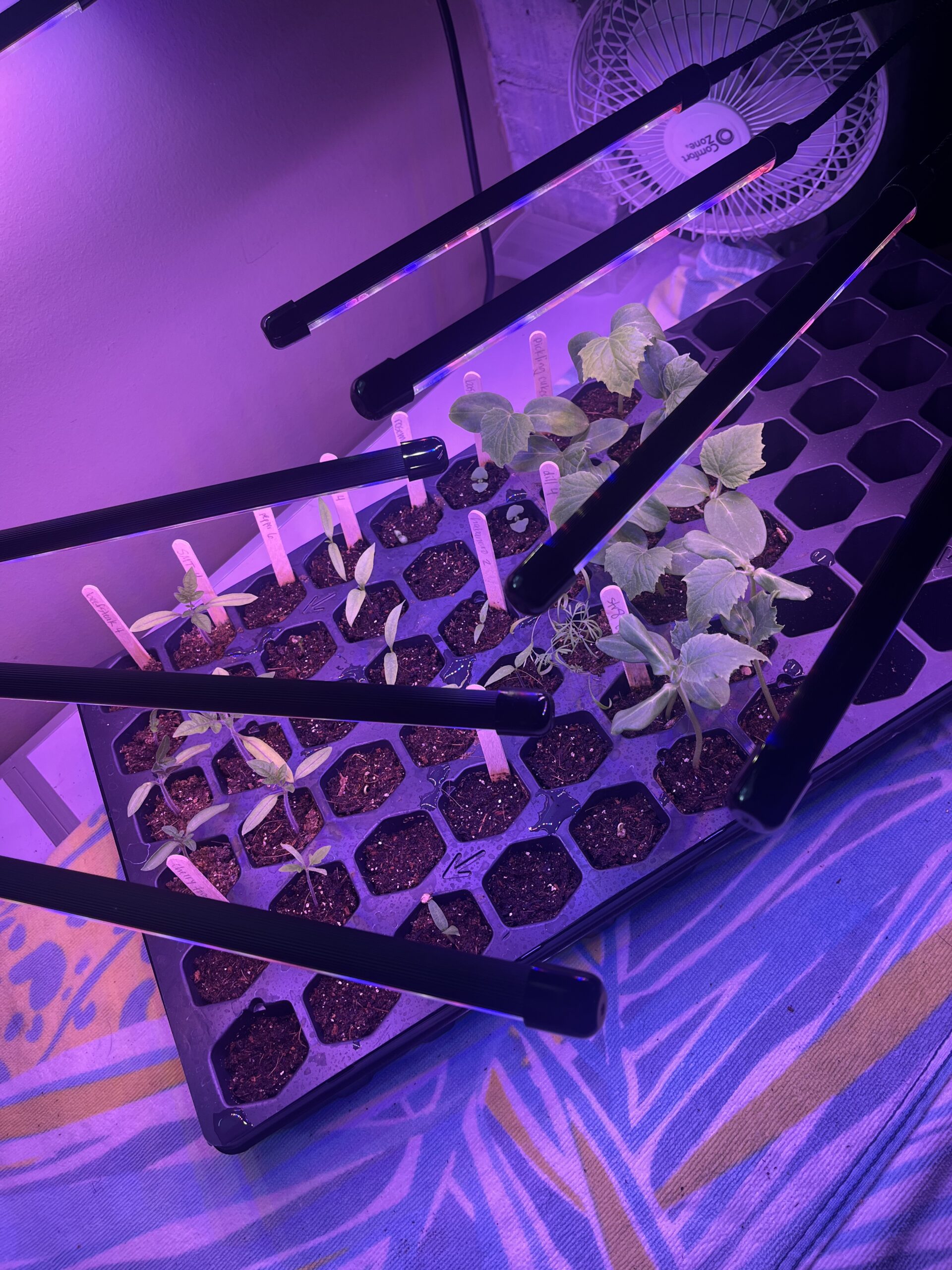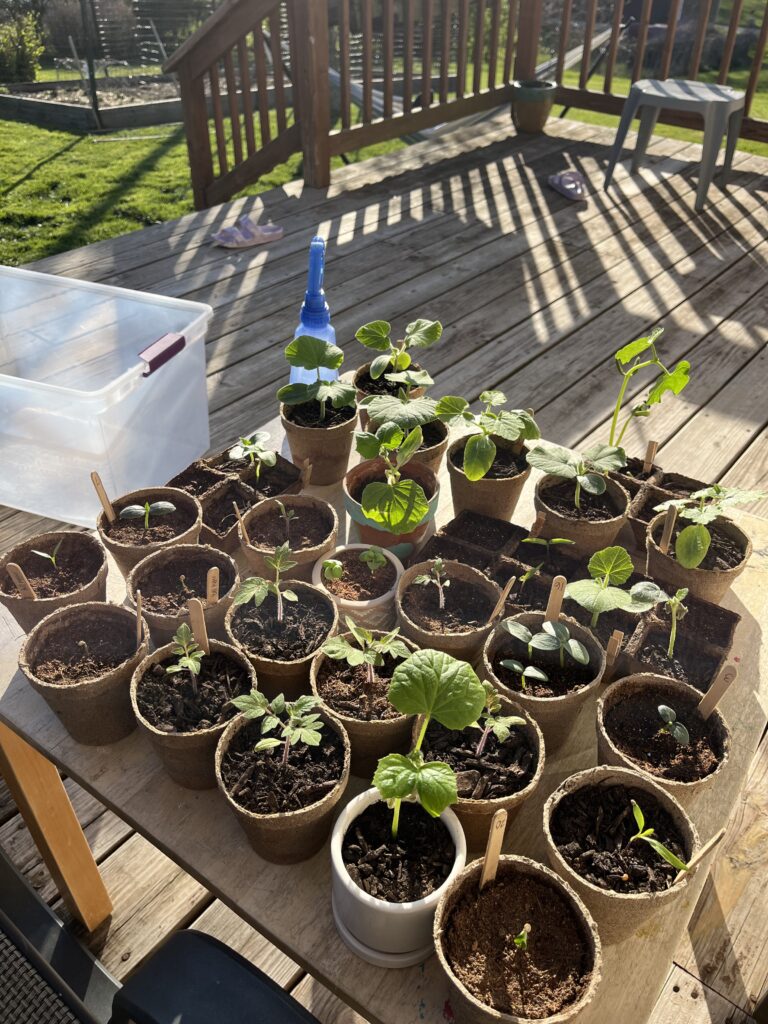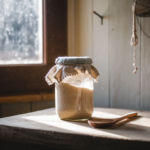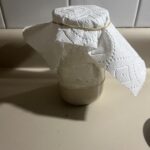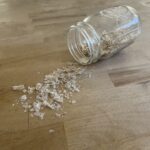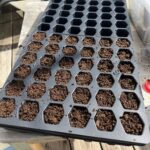Starting seeds indoors can be incredibly rewarding but it doesn’t always run as smoothly as you think it will. Even with the most elaborate setup, seedlings can run into issues that can stunt their growth, or stop growing altogether. The good news? Most of these issues are fixable with a little bit of time and care. Here are a few of the most common issues that may arise and how to fix them.
Leggy Seedlings
What it is:
Tall, spindly stems that lean or fall over. This is a problem because they develop super long stems that are not strong enough to support the weight of the top of the plant.
Cause:
This happens when there is not enough light for your seedlings, or when the light source is too far away. Your seedlings are searching for light and therefore stretching out quickly trying to get closer to the light.
Fix:
Move your seedlings closer to a grow light or increase the amount of time they are in the light. With some seedlings like tomatoes, you can re-pot them and bury the stem if they are too leggy. If your seedlings are very tall and flopping over, you may not be able to save them. Unfortunately, you may have to start over in this case.
Mold or Damping Off
What it is:
White fuzzy mold on the surface of the soil, or sudden seedling collapse at the base.
Cause:
There are a few things that can contribute to this problem. You may be overwatering your seedlings, there could be poor air flow, or the soil could be contaminated.
Fix:
Avoid overwatering your seedlings. You don’t want the soil to be soggy, just barely damp is good. Let the soil dry slightly between waterings. You can also improve air circulation by placing a clip-on fan or an oscillating fan nearby. Just make sure the air movement is not too strong for your seedlings to handle. Lastly, ensure your containers have been sterilized and use fresh seed-starting mix.
Poor Germination
What it is:
Seeds that fail to sprout or germinate.
Cause:
Old seeds, over or under-watering, or temperature.
Fix:
Check the packages of your seeds for the best to use by date – most seeds will be viable for 1-5 years. You can try buying new seeds to see if that makes a difference. Second, ensure you are maintaining a temperature of 65-75℉ for your seedlings. Lastly, make sure the soil is moist, but not soggy or too dry.
Yellow Leaves
What it is:
Leaves are turning pale or yellow.

Cause:
Nutrient deficiency, overwatering, poor drainage, or too intense of lighting.
Fix:
Use a seed-starting soil that has all of the nutrients that seedlings will need. As a last resort, you can begin fertilizing with a diluted seedling fertilizer once true leaves appear. Be careful with fertilizers though, as too much can burn your seedlings and kill them off. Make sure your containers have proper drainage and are getting good air flow.
If your grow lights are too close to the tops of your seedlings, the light can burn the leaves, turning them yellow. Keep the grow lights 2-3 inches above the seedlings, but check the light’s manufacturer guidelines.
Curling or deformed leaves
What it is:
Leaves that twist, curl, or appear distorted.
Cause:
Temperature stress, inconsistent watering, or pests.
Fix:
Keep temperature stable (65-75℉) and avoid sudden changes. Ensure you are not over- or under-watering. Inspect leaves for pests like aphids or fungus gnats and remove them. Water consistently and avoid letting the soil dry out completely between waterings.
Seedlings stop growing
What it is:
Your seedlings may look healthy but appear to have stopped growing.
Cause:
Root-bound plants, nutrient deficiency, or environmental stress.
Fix:
If roots are circling the bottom of the container, it is time to transplant them to a larger container. You can try fertilizing with a diluted seedling fertilizer, but again be very careful that you don’t over-do it. Keep light, watering, and temperature consistent to avoid stressing young seedlings.
Final Thoughts
Most seed-starting problems can be an easy fix with a little bit of attention. The best way to fix problems quickly is to check on your seedlings frequently to monitor for any issues. Keep taking care of those seedlings and you’ll be on your way to a full bounty of vegetables before you know it!

